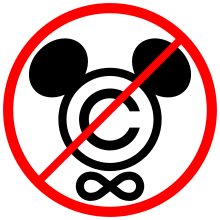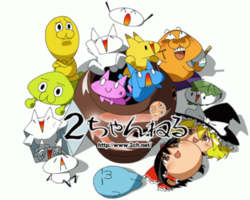 Roppongi Hills, a mega-complex that covers 11.6 hectares of the area in Tokyo, is often mentioned as one of the largest and most successful city renewal projects that have ever been made after World War II in Japan. The project started in 1984 and took about 17 years to complete. The plan involved the city government, the land developer Mori Building Co., and the residents living in the construction area. Just to reach agreements with 500 right holders, the company had spent over 15 years. The concept of the renewal plan seems totally opposite from that of Jane Jacobs, but there is a point in the history of this Roppongi renewal plan that is equivalent to her philosophy. Jane Jacobs’ idea regarding a local community in the city was accidentally realized in the process of building the Roppongi Hills in Japan half a century after Jacobs published her book.
Roppongi Hills, a mega-complex that covers 11.6 hectares of the area in Tokyo, is often mentioned as one of the largest and most successful city renewal projects that have ever been made after World War II in Japan. The project started in 1984 and took about 17 years to complete. The plan involved the city government, the land developer Mori Building Co., and the residents living in the construction area. Just to reach agreements with 500 right holders, the company had spent over 15 years. The concept of the renewal plan seems totally opposite from that of Jane Jacobs, but there is a point in the history of this Roppongi renewal plan that is equivalent to her philosophy. Jane Jacobs’ idea regarding a local community in the city was accidentally realized in the process of building the Roppongi Hills in Japan half a century after Jacobs published her book.The most distinct feature of Roppongi Hills is not its immense and luxurious looks, but the enormously long and complicated process to compete the project which may be unimaginable for Jane Jacobs. In 1986, TV Asahi Co., which owned the main part of the location, decided to make a new headquarters building there and consulted the Minato Ward Office and Mori Building Co. The Ward suggested that they should also redevelop the surrounding area since it was packed with wooden houses, small apartments, and condominiums with narrow streets which made it difficult for fire engines to come into the area in an emergency. After the district was officially designated as a redevelopment inducement area by Tokyo Metropolitan Government in the same year, Mori Building started to negotiate with the residents there. According to Mori Building, their first contact with the residents was totally unwelcoming. Most of the residents did not listen to them at all, but after their repeated visits at each resident’s house at least once every two weeks, many of them gradually opened their hearts and listened to what the developer said. The company explained to them that the plan was not a buyout. It was the joint reconstruction of their houses and apartments. The company opened two offices in Roppongi and started releasing newsletters twice a month to inform the residents of the present situation of the plan. The residents also started town meetings and information sessions to understand the plan more and find out what was the most beneficial for them. Through these meetings, the residents put together their thoughts and gave some requests to the developer such as preserving an old pond in the area and widening the construction area. In 1990, five local communities merged. At first the community members set the new Roppongi Hills opening day sometime in 1996, but it actually took 7 more years to complete. This was just the beginning of the long partnership between Mori Building and the residents living at the site. There was still a long way to go.
The residents in the construction area and Mori Building still had many problems to solve. Under the city redevelopment law, the residents established the Redevelopment Preparatory Association and the plan was finally approved by the Ward in 1998. While the renewal plan was being developed by Mori Building, Minato Ward, and 90% of the residents and stakeholders, there were a few residents who were still against the plan. What they were asking the developer to do was to guarantee that their living standards would be secured the same as before and they would not take any financial risk before they signed the contract. Land prices were decreasing in the 1990s in Japan right after the financial bubble burst. The company did not want to make guarantees to them in that situation (but they finally won assurances by the company’s CEO). Under the city redevelopment law, once residents establish the Redevelopment Preparatory Association for the redevelopment and the plan is approved by the government, all the right holders in the planned area are automatically part of the association even if a person is against the plan. He/she then has to decide whether to stay or leave in 30 days (most of the opposing members moved to the surrounding areas after the final agreements were made with the company). The opposing members put pressure on the Ward Office to stop the project, claiming that the developer had not disclosed the detailed information to the residents yet. Four lawsuits were brought by the residents and right holders. Even after agreements with most of the residents, Mori Building still needed to solve other problems. One of them was how the units in the new buildings would be equitably allocated to each right holder, which took another half a year to solve. The company also had to provide temporary accommodations for the residents while the construction was going on. It built several new apartments around the area just for that purpose. While there were some noise pollution claims by the neighbors during the construction, Roppongi Hills finally opened in April, 2003. By the end, 93% of the residents and right holders agreed on the project and 400 people out of 500 moved in to the new residential buildings (The anti-construction group said the figure is not correct and cannot be that high. According to them, many right holders moved to other places during the negotiation period and the way Mori Building counted residents at the beginning was not appropriate). Finally, it took 17 years to finish the entire project.
That such wonders may be accomplished, people who get marked with the planners’ hex signs are pushed about, expropriated, and uprooted much as if they were the subjects of a conquering power. Thousands upon thousands of small businesses are destroyed, and their proprietors ruined, with hardly a gesture at compensation. Whole communities are torn apart and sown to the winds, with a reaping of cynicism, resentment and despair that must be heard and seen to be believed. (Jacobs 5)This situation may actually occur even today in the world after half a century passed since the publication of this book. In some countries, the government may still have enough power to uproot the residents from construction sites, but that does not happen in Japan. For example, few small wooden houses owned by the farmers who are against the construction can still be seen in the middle of the runways at Narita Airport today. This example shows that the Japanese government does not have enough power to evict the residents from the site for any reason, due to the strict land expropriation law. The same thing has happened everywhere in Japan where redevelopment is planned. Only huge disasters or events such as Meiji Restoration in 1867, Great Kanto Earthquake in 1923, Great Tokyo Air Raids in 1945, and Tokyo Olympics in 1964 have given governments the chances to redevelop the wide areas in Tokyo that needed to be reformed. Today only private corporations can implement and complete the redevelopment with their incentives, professional skills, and financial power. The power balance between a developer and residents in Japan has to be examined in this context. Jacobs pointed out some conditions for a local community to fight city officials. According to her, the leaders of the community should represent the opinion in the community and be the opinion makers at the district level (Jacobs 125). Furthermore, she said, “Effective districts … must their citizens who are in agreement with each other on controversial questions act together…” (127). After she argued these general requirements for a local community, she explained what was actually needed to develop the community saying that the members “must have time to find each other, time to try expedient cooperation [sic] – as well as time to have rooted themselves, too, in various smaller neighborhoods of place or special interest” (134). These are the very relationships that had been fostered between the residents in Roppongi described above. They actually spent 15 years to reach agreements among them and with the developer. During that period, they communicated with each other probably much more than the residents in the other areas did. Here the developer functioned as a coordinator between the residents who leads them toward the goal. Mori Building clearly understands the importance of the partnership with the local residents. It says on its website:
Our designs for future cities are always in partnership with local residents. We know that our goals cannot be achieved without mutual relationships with other stakeholders. The process always begins by engaging them in frank dialogue, listening to their views, and formulating agreed-upon plans. This is the basis for our city planning, which has never changed and will never change (“Urban Design”).The development of the local community in Roppongi perfectly fit the three requisites that Jacobs gave for the growth of the district network: “a start of some kind; a physical area with which sufficient people can identify as users; and Time” (136), which can be paraphrased as “the redevelopment plan in Roppongi that took as long as 17 years.” Only on this point in city planning, Jacobs’ idea perfectly matches the situation of the residents in the Roppongi area.
 Jane Jacobs is often seen as an anti-government/corporation activist because of her protests and criticism of city planners and governments. Her main concept of city planning may be totally opposite from that of Mori Building. It is very clear that the total concept of Roppongi Hills is heavily influenced by Le Corbusier’s city idea (e.g. high-rise residential towers, roof gardens, etc.). In fact, Mori Building’s CEO Minoru Mori owns a private collection of drawings, paintings, and sculptures by Le Corbusier (Bremner), and he is the one whom Jacobs heavily criticizes in her book (21-24) as one of the roots of all evil of useless city planning. Even with the differences in philosophy, however, similar ideas can be found between Jacobs and the recent city redevelopment in Tokyo today.
Jane Jacobs is often seen as an anti-government/corporation activist because of her protests and criticism of city planners and governments. Her main concept of city planning may be totally opposite from that of Mori Building. It is very clear that the total concept of Roppongi Hills is heavily influenced by Le Corbusier’s city idea (e.g. high-rise residential towers, roof gardens, etc.). In fact, Mori Building’s CEO Minoru Mori owns a private collection of drawings, paintings, and sculptures by Le Corbusier (Bremner), and he is the one whom Jacobs heavily criticizes in her book (21-24) as one of the roots of all evil of useless city planning. Even with the differences in philosophy, however, similar ideas can be found between Jacobs and the recent city redevelopment in Tokyo today.

















.jpg)

.jpg)
